The “Penny Scrub” is still evoking notions of civic pride in the industrial heritage of Victorian Cotton Lancashire. The unearthing of the remains of Mayfield Public Baths in Manchester has stimulated community interest in the town’s cultural heritage. In a series of articles on community bath- and wash-houses, the conundrum of the ubiquitous provision of swimming baths is addressed.
During the first week of 2021 innumerable media outlets revealed that the archaeology unit at Salford University had successfully recorded the location of Mayfield Baths. The site was discovered during the construction of Manchester’s first new public park in over 100 years. The civil engineering project is part of the Mayfield District’s £1.4bn community regeneration programme, designed to bring domestic, commercial, and public life back to the Mayfield Ward of ‘Cottonopolis’.
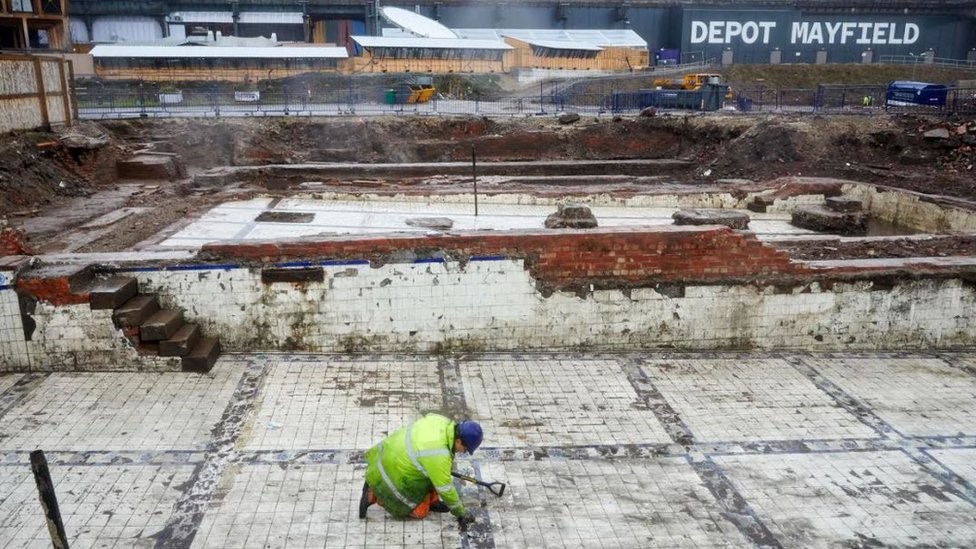
Media coverage fixated on the baths structural remains and on the various artefacts unearthed. The excavation of the baths two swimming pools encouraged the media to draw similarities of community land use from the 1850s to the proposed public park for 2021. At a superficial level the comparison has merit but scholarly research brings greater clarity to the notion of preserving community heritage for future generations. The discipline of industrial archaeology is now defined by its efforts to preserve 18th and 19th century structures as part of a district’s ‘industrial heritage’. In effect, it is a sub-discipline of cultural anthropology, concerned with studying and explaining people at work in different settings.
Industrial archaeology/heritage is a relatively new field, originating in the United Kingdom in the 1950s. It is concerned with the human activity of employment based in domestic and non-domestic locations. Practitioners seek information-based evidence, underpinned by sources such as historical texts, oral accounts, and visual testimony. This multidisciplinary approach is essential to the study of industrial heritage. For example, the tiles decorating Mayfield Baths depict images of blue cotton flowers, acknowledging the source of the investor’s wealth from cotton manufacturing.

Mayfield Baths depict images of blue cotton flowers
Social media reports tend to provide an inaccurate assessment of the function of Victorian public baths provision. The assumption that public baths were provided as a philanthropic gesture fails to acknowledge the social-class structure of the period. In the case of Mayfield Baths, it was built and managed by the Manchester and Salford Baths and Laundry Company who were obliged to provide an annual dividend to their shareholders. The supply of water for bathing and laundering was not cost-effective; it could only be offset by the inclusion of financially viable swimming pools. Manchester and Salford, unlike many of their satellite mill-towns, encouraged private subscription in order to build and maintain the swimming pools, bath-houses, and wash-houses.
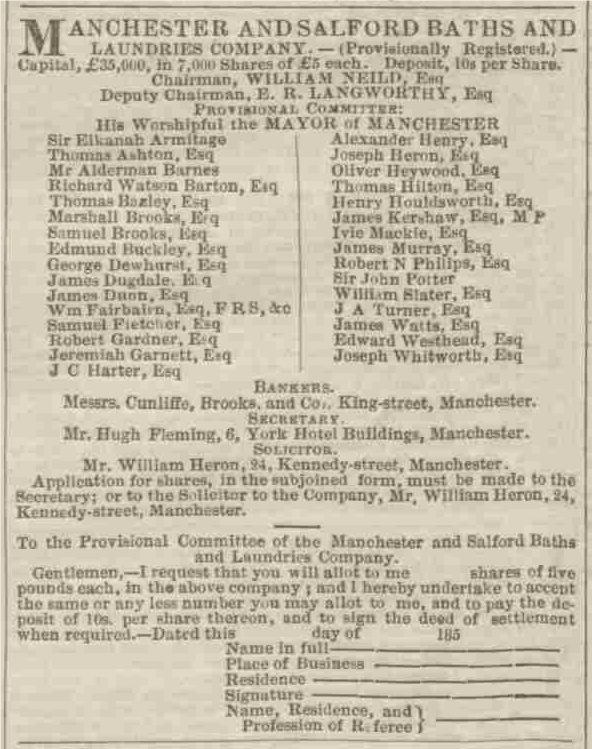
Manchester Courier and Lancashire General Advertiser, 13 January 1855.
In 1855 the Manchester and Salford Baths and Laundry Company had raised enough money from the issuing of 7,000 £5 shares to build their first public baths in Greengate, Salford. The company built 3 baths: Greengate Baths opened in September 1856; Mayfield Baths in August 1857; and, Leaf Street Baths in June 1860. The company made commercial provision for what many social reformers considered to be a municipal duty. In 22 years, 1856-1878, the company spent £41,150 in building 3 establishments, with profits accrued to its shareholders of £13,627. This was a healthy return for shareholders of 1.6% per annum; there had been 3,733,293 visitors who had paid for a swim, taken a hot or cold private bath, with 617,266 washers tending to their laundry.
Public baths provision in Manchester prior to 1878 was conducted by the private sector. However, facilities for private bathing and laundering were inadequate for the ever-growing population. Public baths with swimming facilities were a commercial success initially, leading to an expansion in provision. The scheme was intended to bring health, comfort, and welfare to urban-industrial inhabitants in particular. In contrast, many of Lancashire’s mill-towns provided municipally owned public baths a decade or more before Manchester and Salford Councils made provision. Local authorities throughout the country treated the municipal provision of public baths with apprehension. Concerns were based upon political, social, and economic considerations despite the Baths and Wash-Houses Act of 1846 being a permissive piece of legislation.
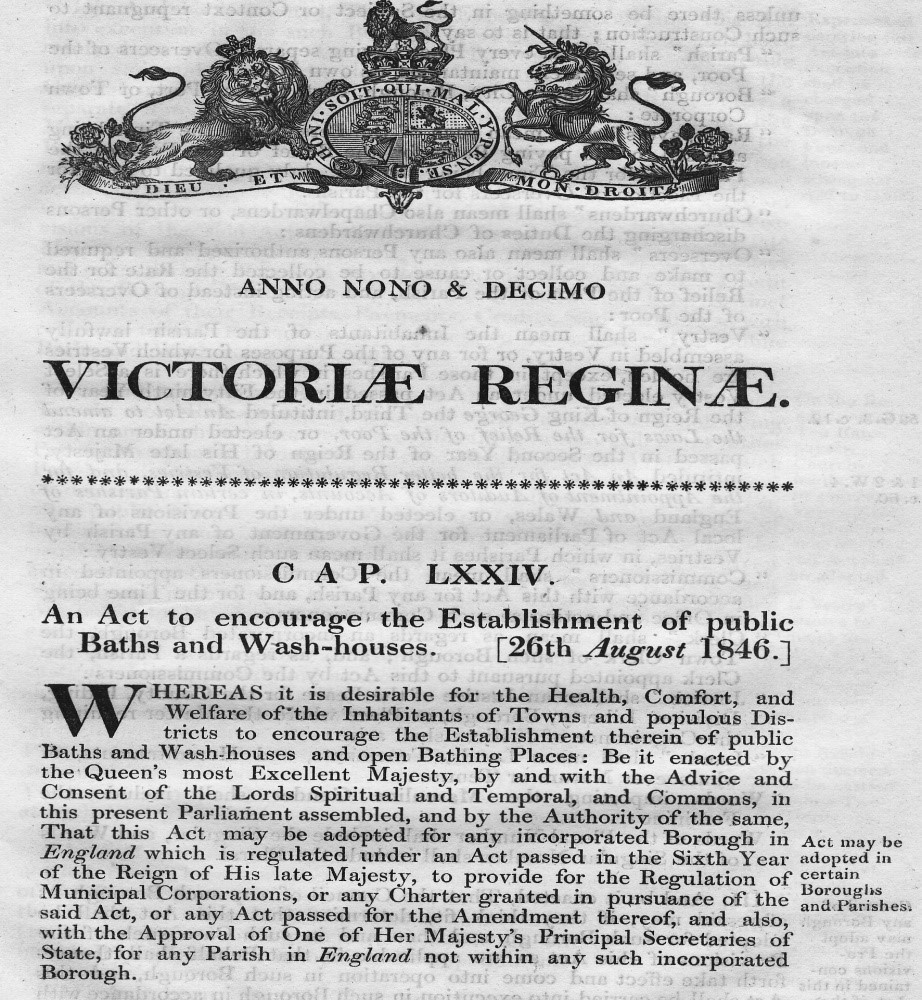
The Baths and Wash-Houses Act of 1846.
Manchester and Salford were two of the wealthiest towns/cities in the country, but councillors feared that by accepting the conditions as laid down in the 1846 Act, they would weaken their political autonomy. It was also a period of significant social reforms that were to be financed by means of local rates. The provision of public health reforms were viewed as a step too far by many ratepayers, revealing deep-rooted social prejudice. Improved productivity through improvements in the physical and moral condition of the labouring classes was a concept often rejected by the new entrepreneurial middle classes.
Other barriers to municipal public baths provision were of a more practical nature. Water supplies were prioritised for manufacturing processes, with many factories building their own reservoirs supplied by subterranean wells, local canals, and rivers. The heating and filtration of water improved as new technologies were adopted. The site of baths establishments and their facility provision were essential factors in their financial success. Given that the labouring classes lived in overcrowded urban districts, land was at a premium for housing rather than as a project to encourage ‘municipal trading/socialism’.
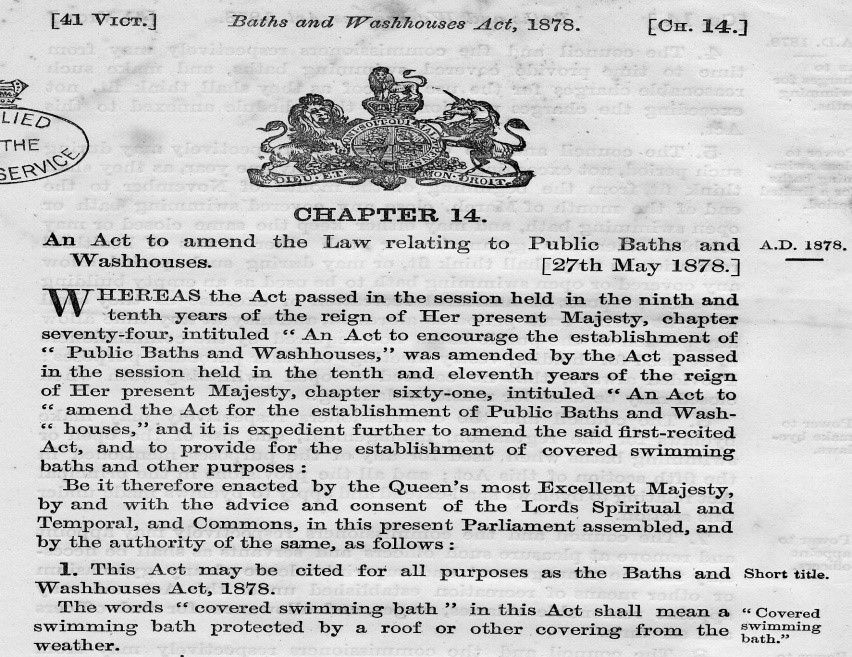
Baths and Wash-Houses Amendment Act 0f 1878.
The historical significance of swimming pool provision obscured the original role of municipal public baths. Indeed, many medical historians consider Victorian municipal public baths to have been a prosaic but useful service.
Article © of Keith Myerscough
Read Part 2: Public Baths Providing Health, Hygiene, and Exercise next week

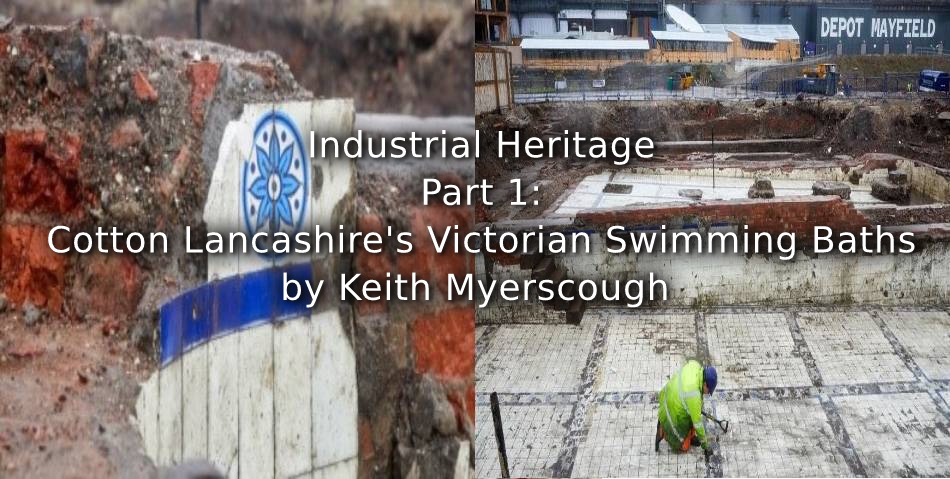
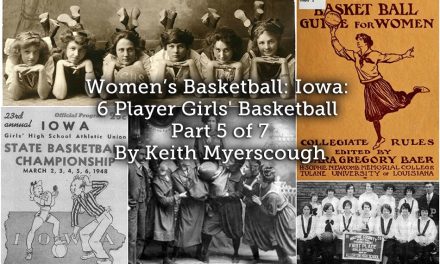



A most interesting article on Manchester’s role in the early provision of public baths. The Manchester and Salford Baths and Laundries Ltd was specially important since the city didn’t adopt the Public Baths and Wash-Houses Acts until much later. I also liked your reinforcement of the importance of industrial archaeology, another baths related local example of this being the uncovering of the remains of the Turkish bath in Clifford Street (http://www.victorianturkishbath.org/EBOOK/Pix/139-Clifford.htm).
I look forward keenly to the the next artcles in the series.
CORRECTION TO Earlier reply.
The Industrial archaeology reference should have been to http://www.victorianturkishbath.org/EBOOK/Pix/139-Clifford.htm#B1